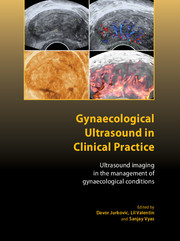Crossref Citations
This Book has been
cited by the following publications. This list is generated based on data provided by Crossref.
Radswiki, The
Jones, Jeremy
and
Weerakkody, Yuranga
2011.
Radiopaedia.org.
Brezinka, Christoph
and
Spitzer, Dietmar
2013.
Ultraschalldiagnostik in Geburtshilfe und Gynäkologie.
p.
801.
Menakaya, Uche
Reid, Shannon
Infante, Fernando
and
Condous, George
2015.
Systematic Evaluation of Women With Suspected Endometriosis Using a 5‐Domain Sonographically Based Approach.
Journal of Ultrasound in Medicine,
Vol. 34,
Issue. 6,
p.
937.
Wickramasinghe, Dakshitha Praneeth
Perera, Chamila Sudarshi
Senanayake, Hemantha
and
Samarasekera, Dharmabandhu Nandadeva
2015.
Correlation of three dimensional anorectal manometry and three dimensional endoanal ultrasound findings in primi gravida: a cross sectional study.
BMC Research Notes,
Vol. 8,
Issue. 1,
Taksøe‐Vester, Caroline
Dreisler, Eva
Andreasen, Lisbeth A.
Dyre, Liv
Ringsted, Charlotte
Tabor, Ann
and
Tolsgaard, Martin G.
2018.
Up or down? A randomized trial comparing image orientations during transvaginal ultrasound training.
Acta Obstetricia et Gynecologica Scandinavica,
Vol. 97,
Issue. 12,
p.
1455.
Abdullahi Idle, Salwa
and
Hamoda, Haitham
2019.
Outcomes of endometrial assessment in women with unscheduled bleeding on hormone replacement therapy.
Post Reproductive Health,
Vol. 25,
Issue. 2,
p.
95.
Abdullahi Idle, Salwa
Panay, Nick
and
Hamoda, Haitham
2021.
A cross-sectional national questionnaire survey assessing the views of members of the British Menopause Society on the management of patients with unscheduled bleeding on hormone replacement therapy.
Post Reproductive Health,
Vol. 27,
Issue. 3,
p.
159.



